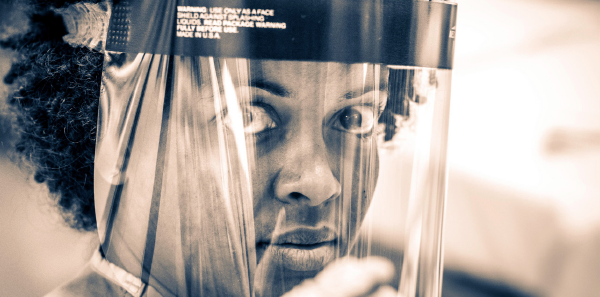
“I have been to the hospital countless times over the last few years, and you are the first Black doctor that I have met to take care of me. Thank you for being here.” He was a young Black male paralyzed from the waist down after a gunshot wound to the spine. He had been in and out of the hospital due to complications from his paraplegia. He was trying to get his life together, but reoccurring and new obstacles prevented him from achieving the life he wanted.
Explore This Issue
ACEP Now: Vol 39 – No 12 – December 2020I felt a mix of emotions, unsure whether to feel pride or disappointment in what he told me. I said, “You’re welcome,” and told him I was doing the best job I could, yet I left his room slightly disheartened. Cognitively, I knew that I was among an incredibly small minority of physicians at my hospital and in medicine overall, but hearing his words sparked a better understanding of how important my role as a Black male physician is in emergency medicine and in my community.
One of the attributes that attracted me to emergency medicine was the opportunity to care for patients from all walks of life, no matter their ethnicity, religion, or economic class. As a Black physician, I especially took pride in caring for members of my community, a group that is often underserved. It is well documented that medically underserved populations have increased trust in physicians who are underrepresented in medicine, increased adherence to physician recommendations, and even decreased hospital and ED utilization.1
Despite the growth of emergency medicine as a field, we have had lower application rates from women medical students and students underrepresented in medicine than expected from the general population.2 One documented reason for the lack of diversity in the emergency medicine applicant pool is the lack of diversity among emergency medicine faculty. Currently, approximately 10 to 15 percent of EM faculty are underrepresented minorities.3 As a trainee, I felt fulfilled by the patients who received our care but often discouraged by the lack of emergency medicine mentors with whom I had shared experiences.
What We Can Do
For our specialty to diversify its physician pool, it is imperative to understand the challenges underrepresented minorities face in medical school matriculation and the factors that motivate interest in emergency medicine. Quantitative and qualitative research cataloging the obstacles to medical school matriculation for minorities includes, but is not limited to, a disproportionate number of minorities educated in school districts with fewer resources, lack of positive role models or sponsors, barriers from bias and stereotyping, the financial cost of higher education, poor socialization to the pre-med process, and a dearth of visible underrepresented minorities in medicine.4 A recent study also showed that lower interest in emergency medicine was independently correlated with sex and ethnic or racial profile. The odds of underrepresented students in medicine planning careers in emergency medicine were 32 percent lower than their majority peers. Age, level of indebtedness, plans to practice in an underserved area, and advice from mentors were shown to be positive predictors of emergency medicine interest.5
I am all too familiar with the obstacles that many minority students face, but I was fortunate to have supportive mentors to help guide me along a path toward medical school and a career in emergency medicine. The data are clear. Emergency physicians who are underrepresented minorities in medicine can have an enormous impact on the trajectory and talent acquisition pipeline of minority students. But we can’t do it alone.
Acknowledging the consequences of underrepresentation in emergency medicine, the Society for Academic Emergency Medicine and ACEP have included diversity and inclusion in their mission goals.1 In 2008, the Council of Emergency Medicine Residency Directors provided national expert recommendations to address the diversity gap in emergency medicine. Unfortunately, these recommendations have not been sufficiently adopted across residency programs. Common reasons include a lack of dedicated resources in some cases, and diversity not even being a priority in others.6 Identifying local faculty members who can lead these efforts is crucial, as is compensating them for their time, just like any other leadership role.
Our country’s demographics are rapidly changing, and our specialty needs to start better mirroring our patient populations. Recent events and tensions have especially highlighted the importance of equity, diversity, and inclusion in medical education and training in emergency medicine. To create change, medical school and residency program leadership across the country needs to engage and make this a priority. Numerous authors, workgroups, and organizations have provided tactics for addressing this issue, including:
Pages: 1 2 | Single Page





No Responses to “Diversity Should Be a Priority”